 If any number of quantities are proportional, any antecedent is to its consequent as the sum of all the antecedents is to the sum of all the consequents. Let a : b = c : d = e :f Now ab = ab (1) and by Theorem I. If any number of quantities are proportional, any antecedent is to its consequent as the sum of all the antecedents is to the sum of all the consequents. Let a : b = c : d = e :f Now ab = ab (1) and by Theorem I.  An Elementary Geometry - Page 30by William Frothingham Bradbury - 1872 - 110 pagesFull view An Elementary Geometry - Page 30by William Frothingham Bradbury - 1872 - 110 pagesFull view - About this book
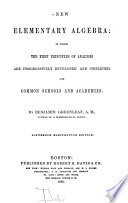 | Benjamin Greenleaf - 1866 - 336 pages
...ce and -j =s -j. Therefore, by Art. 38, Ах. Т, •£ = ¿, or, a : 6 : : с : d. THEOREM X. 324. If any number of quantities are proportional, any...antecedents is to the sum of all the consequents. Let a : b : : с : d : : e : f; then a : b : : a -\-c-\- e :b -\-d-\- f. For, by Theo. I., ad = bc, and af= be;... | |
 | Joseph Ray - Algebra - 1866 - 252 pages
...— In any continued proportion, tlmt is, any number of proportions having the same ratio, any one antecedent is to its consequent, as the sum of all...the sum of all the consequents. Let a : b : : c : d : : m :n, etc. Then will a : b : : a+c+wi : 6+d+n. Since a : b : : c : d, And a : b : : m : n, We have... | |
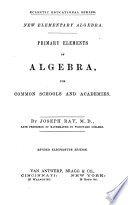 | Joseph Ray - Algebra - 1866 - 250 pages
...— In any continued proportion, that is, any number of proportions having the same ratio, any one antecedent is to its consequent, as the sum of all...the sum of all the consequents. Let a :b : : c :d : :m-.n, etc. Then will a : 6 : : a+c+m : b-\-d-\-n. Since a : b : : c : d, And a :b: :m:n, We have... | |
 | Horatio Nelson Robinson - Algebra - 1866 - 328 pages
...PROPOSITION xm. 275, If any number of proportionals have the same ratio, any one of the antecedents will be to its consequent as the sum of all the antecedents is to the sum of all the consequents. t Let a : b = a : b (A) -Also, a : b = с : d (в) a : b =m : n (С) &c. = &c. We are to prove that... | |
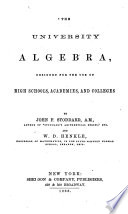 | John Fair Stoddard, William Downs Henkle - Algebra - 1866 - 546 pages
...c+d : cd QED PROPOSITION («>94.) 13. In a continued proportion, any antecedent it to its sjnscquent as the sum of all the antecedents is to the sum of all the consequents. DEMONSTRATION. Let a : b :: c : d :: e :/:: g : h :: &o. We are to prove that a ib '.\a + c + e+g,... | |
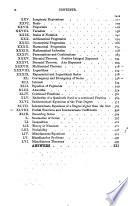 | Isaac Todhunter - Algebra - 1866 - 580 pages
...quantities are proportionals, as one antecedent is to its consequent, so is the sum of all the antecedents to the sum of all the consequents. Let a : b :: c : d :: e : f; then a : b :: a + c +e : b + d +f. For ad=bc, and af= be, (Art. 386), also ab = ba ; hence ab + ad... | |
 | Gerardus Beekman Docharty - Geometry - 1867 - 474 pages
...' THEOREM VII. If any number of quantities be proportional, then any one of the antecedents will be to its consequent as the sum of all the antecedents is to the sum of all the consequents. Let A:B::mA:»nB::nA:nB, &c. ; then will A: B:: A : B+mB+»B, &c. ^ B+mB+nB (l+»»+n)BB , For -T— !... | |
 | Benjamin Greenleaf - 1867 - 336 pages
...any number of quantities are proportional, any antecedent is to its consequent as the sum of all tJie antecedents is to the sum of all the consequents. Let a : b : : c : d : : e : f; then a : b : : a -\-c-\-e : b-\-d-\- f. For, by Theo. I., ad=bc, and af=be; also, ab = b a. Adding,... | |
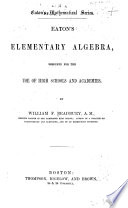 | William Frothingham Bradbury - Algebra - 1868 - 270 pages
...proportion. Let a : b = c : d ac 6=3' -,-r an c" Hence, F = ^ ie a" : J" = c" : <f THEOREM XII. 213. If any number of quantities are proportional, any...consequents. Let a : b = c : d = e : f Now ab =: ab (1) and by Theorem I. ad = bc (2) and also af=be (3) Adding (1), (2), (3), Hence, by Theorem II. a:... | |
 | William Frothingham Bradbury - Algebra - 1868 - 264 pages
...will be in proportion. Let a : b'='c : d ac l=d Hence, ? = 5 ie a" : 5" = c" : cf THEOREM XII. 213. If any number of quantities are proportional, any...sum of all the consequents. Let a : b=; c : d = e if Now ab = ab (1) and by Theorem I. ad = bc (2) and also a/=6« (3) Adding (1), (2), (3), g(b+.d+f)... | |
| |